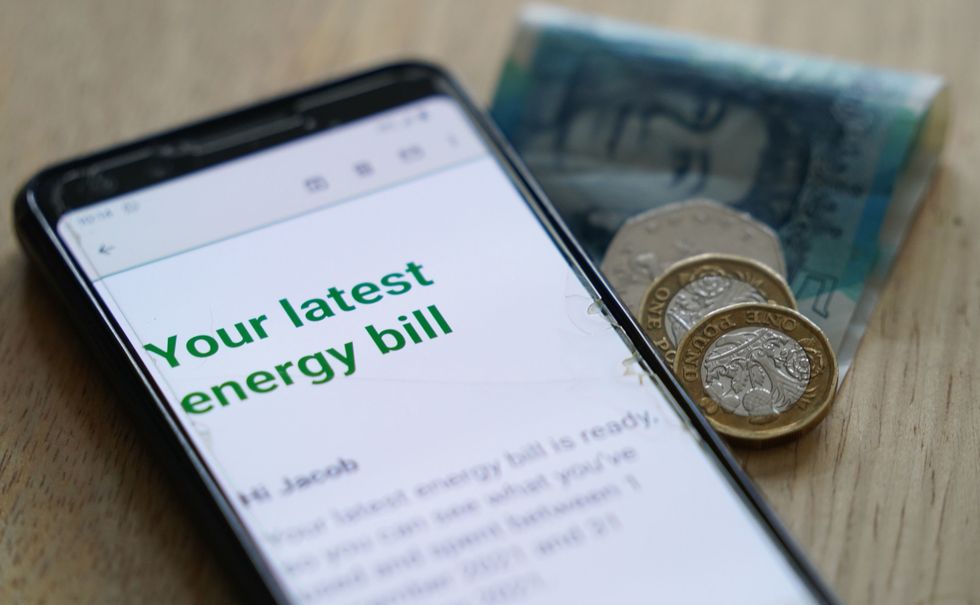Ofgem's energy price cap is forecast to fall in April 2024
GETTY
Ofgem now updates the energy price cap on a quarterly basis
Don't Miss
Most Read
Trending on GB News
Ofgem’s energy price cap is expected to fall by 16 per cent, quarter-on-quarter, in April, according to a new forecast.
It could mean a typical household who uses gas and electricity and pays by direct debit could be set to save hundreds per year under the new limit, according to Cornwall Insight.
The energy price cap is currently £1,928 per year for these billpayers and is forecast to fall by £288 to £1,620.
However, the price cap is a limit on the maximum amount energy suppliers can charge for each unit of energy for people on a standard variable tariff, meaning those who use more would pay more than the annual quoted amount.

Ofgem's energy price cap is currently £1,928 per year, for people on typical use paying for dual-fuel via direct debit
PA
It follows concerns about disruption to European gas supply with some Liquified Natural Gas (LNG) shipments being diverted away from the Red Sea, sparking fears energy bills could surge.
Prices are forecast to remain lower than current prices throughout this year, analysts said, predicting a fall to £1,497 per annum in July, before a slight rise to £1,541 p/a in October.
Dr Craig Lowrey, Principal Consultant at Cornwall Insight said: “Concerns that events in the Red Sea would lead to a spike in energy bills have so far proved premature, and households can breathe a sigh of relief that prices are still forecast to fall.
“Healthy energy stocks and a positive supply outlook are keeping the wholesale market stable. If this continues, we could see energy costs hitting their lowest since the Russian invasion of Ukraine.
“Though recent trends hint at possible stabilisation, a full return to pre-crisis energy bills isn’t on the horizon.
“Shifts in where and how Europe sources its gas and power, alongside continued market jitters over geopolitical events, mean we are likely still facing costs hundreds of pounds above historical averages for a while, potentially the new normal for household energy budgets.
“Whether we can achieve long-term reductions in the UK’s energy costs will hinge on breaking free from the volatility of imported energy prices.
“To make a real and lasting impact, we need to commit to a sustained transition to homegrown renewable energy sources, reducing our reliance on the volatile international energy market.”
LATEST DEVELOPMENTS:
WATCH NOW: Liam Halligan speaks about January's energy price cap in 2023
Richard Neudegg, director of regulation at Uswitch.com, said the prospect of the price cap falling further than expected in April was positive but would be “little comfort for households struggling through the coldest time of year with high energy bills”.
He added: “Consumers shouldn’t count their chickens yet, however, as the further into the future predictions look, the less certain they are, given the wholesale energy market can change quickly.
“No one will know for sure how much they will be paying in April until the new price cap level is announced in February, making it hard for households to budget in these challenging times.
“We hope these predictions will encourage suppliers to bring back cheaper fixed deals. Ofgem should ensure it is encouraging suppliers to offer deals widely, and at competitive prices.”








